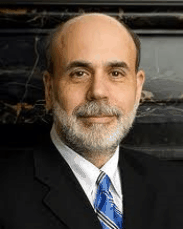
Well that was an anti-climax. After months of speculation that the Federal Reserve would begin “tapering” (winding down) its $US85 billion monthly bond purchase program (known as “quantitative easing” or QE) at its September Federal Open Market Committee (FOMC) meeting, held overnight, it decided against acting.
In choosing not to taper its bond purchases, it signalled that it remains worried about the US economic recovery, particularly: the high unemployment rate; the heated Congressional debate over the budget; and the recent 1% lift in mortgage rates that threatens to snuff-out the housing recovery.
The tightening of financial conditions observed in recent months, if sustained, could slow the pace of improvement in the economy and labour market…
The extent of the effects of restrictive fiscal policy remain unclear and upcoming fiscal debates may involve additional risks to financial markets and to the broader economy.
The Fed also downgraded its economic growth forecasts, with the economy now expected to grow between 2.0% and 2.3% in 2013, down from 2.3% to 2.6% forecast in June. The 2014 growth forecasts were also lowered to between 2.9% and 3.1%, down from between 3.0% to 3.5%.
The market clearly loved the move, with the S&P 500 and Dow rising by more than 1% to a record high. Worryingly for Australia, the Aussie Dollar has also surged, now trading at around 95 US cents which, if maintained, will place unwanted pressure on trade exposed sectors and act to reduce nominal GDP growth and government revenue – exactly what the RBA and Treasury do not want.
The Fed signalled that it will wait for more evidence of labour market improvement before beginning to taper its bond purchases. Bernanke also emphasised that once tapering does eventually begin, short term interest rates will remain zero-bound, at least until unemployment falls to around 6.5%. However, he also noted that the 6.5% unemployment figure is a “threshold”, not a “trigger”, suggesting the Fed’s zero interest rate policy could remain as long as inflation is contained.

